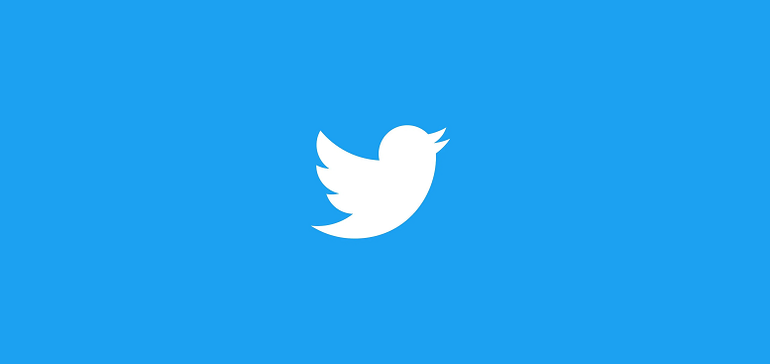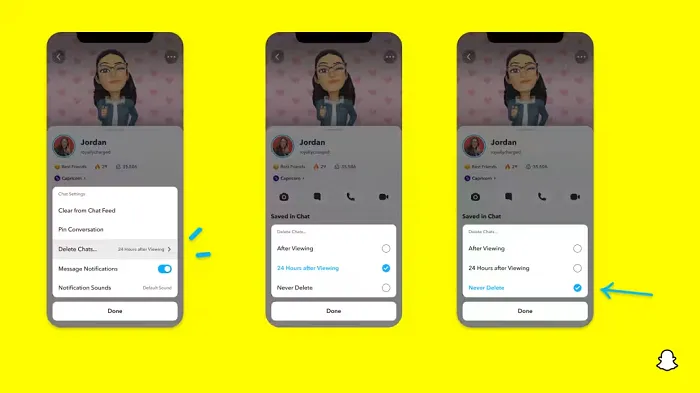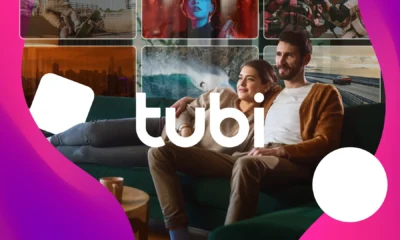SOCIAL
Twitter to Provide Musk with its ‘Full Firehose’ of Tweets as it Works to Finalize Takeover Deal

The Twitter/Elon Musk saga is moving to the next uncomfortable stage, with Twitter now planning to provide Musk’s team with its ‘full firehose’ of tweets, in order to let Musk determine for himself the amount of fake and bot profiles in the app.
Earlier this week, Musk’s legal team filed an official statement with the SEC in which it explained that Musk will not go through with his $44 billion takeover of the company if Twitter’s unable to provide evidence to support its claim that fake accounts and bots make up just 5% of its active user base.
Musk’s team asserts that this is critical information, as Twitter relies on its reach data to maximize its core ads business, and if a significant proportion of its users are not actual, real people, that materially changes the deal.
Thus far, Twitter has stood by its numbers, which it says have been measured via processes that have been accepted by the SEC in the past. Now, it’s looking to hand over all the information that it can to Musk’s team.
As reported by The Washington Post:
“After a weeks-long impasse, Twitter’s board plans to comply with Elon Musk’s demands for internal data by offering access to its full “firehose,” the massive stream of data comprising more than 500 million tweets posted each day, according to a person familiar with the company’s thinking.”
What, exactly, Musk will then do with all that info is hard to say, but clearly, Twitter’s legal team has advised that this is the only way to appease Musk’s demands, providing all the information that it can, which will then enable Musk and Co. to develop their own assessment process to determine the amount of fake profiles in the app.
What happens from there is hard to say. If Elon comes up with his own methodology, and finds that the fake profile count is more like 20%, what then?
Some have noted that Musk waived various due diligence elements in his initial takeover offer, in order to hasten the deal, which means that he essentially has to go through with the purchase, no matter what.
But clearly, Elon himself believes that won’t hold up in this respect.
And he’s likely right, but when it comes to bots and fake accounts, the challenge for Elon will be in proving that Twitter acted with ill-intent – i.e. has Twitter intentionally misreported its numbers in order to enhance its market position?
I would suggest that would be difficult to prove definitively, even if Musk can come up with his own detection methodology – if Musk’s team comes up with a better solution for detecting bots, I suspect that Twitter will say ‘thanks for that, we weren’t aware of that in the past’, and the deal would then have to go through as planned, because Twitter hasn’t acted in bad faith in its past disclosures.
Though there is another argument – that Musk can wriggle out of the deal if he’s able to demonstrate that a ‘major event’ has significantly altered Twitter’s value, which then changes the parameters of the initial deal. That’d be a lot harder to prosecute, but maybe, if Musk can come up with a breakthrough reporting process, which shows that many more than 5% of Twitter’s active users are fake, that could be classified as a ‘major event’ in itself?
That seems like weaker legal ground, but Musk seems to believe that if he’s able to provide clear evidence that the amount of fake profiles on the platform is indeed much higher than Twitter says, that he’ll be able to walk away, or maybe reduce his offer price.
In reality, I’m not sure that’s actually how this will play out.
In any event, Twitter’s moving ahead with its preparations for an Elon takeover, with Reuters reporting that it’s planning to hold a shareholder vote by early August to consummate the deal.
At the same time, legal challenges continue to provide additional distractions for the company, with Twitter also fighting a January 6th committee request for its employees’ internal communications – “including Slack messages about moderating Tweets related to the Capitol attack”.
As per Rolling Stone:
“The social media giant is asserting a First Amendment privilege to push back on the panel’s demand for communications about moderating tweets related to the Capitol insurrection.”
Of course, Twitter’s constantly facing challenges and issues of this type. But you can only imagine that Musk’s legal team would be grinding their teeth at the thought of having to deal with such in future.
If such issues are bothering Elon himself, however, he’s hardly showing it. He’s too busy tweeting about the believability of ‘Red Riding Hood’, and setting his sights on another social app.
YouTube seems to be nonstop scam ads
— Elon Musk (@elonmusk) June 7, 2022
It’s like he’s just now realizing that there’s a lot of scam activity on social platforms, which you would think that someone would take more note of before offering $44 billion to purchase a social app.
Will Elon eventually become the owner of Twitter? On balance, taking legal considerations into account, and looking at the public-facing evidence, that still seems the most likely outcome.
But there’s a lot more to come before we reach a final conclusion.
SOCIAL
Snapchat Explores New Messaging Retention Feature: A Game-Changer or Risky Move?

In a recent announcement, Snapchat revealed a groundbreaking update that challenges its traditional design ethos. The platform is experimenting with an option that allows users to defy the 24-hour auto-delete rule, a feature synonymous with Snapchat’s ephemeral messaging model.
The proposed change aims to introduce a “Never delete” option in messaging retention settings, aligning Snapchat more closely with conventional messaging apps. While this move may blur Snapchat’s distinctive selling point, Snap appears convinced of its necessity.
According to Snap, the decision stems from user feedback and a commitment to innovation based on user needs. The company aims to provide greater flexibility and control over conversations, catering to the preferences of its community.
Currently undergoing trials in select markets, the new feature empowers users to adjust retention settings on a conversation-by-conversation basis. Flexibility remains paramount, with participants able to modify settings within chats and receive in-chat notifications to ensure transparency.
Snapchat underscores that the default auto-delete feature will persist, reinforcing its design philosophy centered on ephemerality. However, with the app gaining traction as a primary messaging platform, the option offers users a means to preserve longer chat histories.
The update marks a pivotal moment for Snapchat, renowned for its disappearing message premise, especially popular among younger demographics. Retaining this focus has been pivotal to Snapchat’s identity, but the shift suggests a broader strategy aimed at diversifying its user base.
This strategy may appeal particularly to older demographics, potentially extending Snapchat’s relevance as users age. By emulating features of conventional messaging platforms, Snapchat seeks to enhance its appeal and broaden its reach.
Yet, the introduction of message retention poses questions about Snapchat’s uniqueness. While addressing user demands, the risk of diluting Snapchat’s distinctiveness looms large.
As Snapchat ventures into uncharted territory, the outcome of this experiment remains uncertain. Will message retention propel Snapchat to new heights, or will it compromise the platform’s uniqueness?
Only time will tell.
SOCIAL
Catering to specific audience boosts your business, says accountant turned coach

While it is tempting to try to appeal to a broad audience, the founder of alcohol-free coaching service Just the Tonic, Sandra Parker, believes the best thing you can do for your business is focus on your niche. Here’s how she did just that.
When running a business, reaching out to as many clients as possible can be tempting. But it also risks making your marketing “too generic,” warns Sandra Parker, the founder of Just The Tonic Coaching.
“From the very start of my business, I knew exactly who I could help and who I couldn’t,” Parker told My Biggest Lessons.
Parker struggled with alcohol dependence as a young professional. Today, her business targets high-achieving individuals who face challenges similar to those she had early in her career.
“I understand their frustrations, I understand their fears, and I understand their coping mechanisms and the stories they’re telling themselves,” Parker said. “Because of that, I’m able to market very effectively, to speak in a language that they understand, and am able to reach them.”Â
“I believe that it’s really important that you know exactly who your customer or your client is, and you target them, and you resist the temptation to make your marketing too generic to try and reach everyone,” she explained.
“If you speak specifically to your target clients, you will reach them, and I believe that’s the way that you’re going to be more successful.
Watch the video for more of Sandra Parker’s biggest lessons.
SOCIAL
Instagram Tests Live-Stream Games to Enhance Engagement

Instagram’s testing out some new options to help spice up your live-streams in the app, with some live broadcasters now able to select a game that they can play with viewers in-stream.
As you can see in these example screens, posted by Ahmed Ghanem, some creators now have the option to play either “This or That”, a question and answer prompt that you can share with your viewers, or “Trivia”, to generate more engagement within your IG live-streams.
That could be a simple way to spark more conversation and interaction, which could then lead into further engagement opportunities from your live audience.
Meta’s been exploring more ways to make live-streaming a bigger consideration for IG creators, with a view to live-streams potentially catching on with more users.
That includes the gradual expansion of its “Stars” live-stream donation program, giving more creators in more regions a means to accept donations from live-stream viewers, while back in December, Instagram also added some new options to make it easier to go live using third-party tools via desktop PCs.
Live streaming has been a major shift in China, where shopping live-streams, in particular, have led to massive opportunities for streaming platforms. They haven’t caught on in the same way in Western regions, but as TikTok and YouTube look to push live-stream adoption, there is still a chance that they will become a much bigger element in future.
Which is why IG is also trying to stay in touch, and add more ways for its creators to engage via streams. Live-stream games is another element within this, which could make this a better community-building, and potentially sales-driving option.
We’ve asked Instagram for more information on this test, and we’ll update this post if/when we hear back.
-

 PPC5 days ago
PPC5 days ago19 Best SEO Tools in 2024 (For Every Use Case)
-

 MARKETING7 days ago
MARKETING7 days agoStreamlining Processes for Increased Efficiency and Results
-
SEARCHENGINES6 days ago
Daily Search Forum Recap: April 17, 2024
-

 PPC7 days ago
PPC7 days ago97 Marvelous May Content Ideas for Blog Posts, Videos, & More
-

 SEO6 days ago
SEO6 days agoAn In-Depth Guide And Best Practices For Mobile SEO
-
SEARCHENGINES5 days ago
Daily Search Forum Recap: April 18, 2024
-

 MARKETING6 days ago
MARKETING6 days agoEcommerce evolution: Blurring the lines between B2B and B2C
-
SEARCHENGINES4 days ago
Daily Search Forum Recap: April 19, 2024
















You must be logged in to post a comment Login